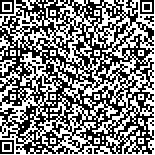| 本文已被:浏览 1024次 下载 789次 |

码上扫一扫! |
|
|
| MIS 6期以来西菲律宾海表层营养物质水平演化及其控制因素:浮游有孔虫Globigerinoides ruber的Cd/Ca证据 |
|
郭景腾1,2, 李铁刚3,4, 熊志方3,4, 仇晓华5, 秦秉斌3, 常凤鸣1,4
|
|
1.中国科学院海洋研究所海洋地质与环境重点实验室, 山东 青岛 266071;2.中国科学院大学, 北京 100049;3.国家海洋局第一海洋研究所, 山东 青岛 266061;4.青岛海洋科学与技术国家实验室海洋地质过程与环境功能实验室, 山东 青岛 266237;5.山东省第一地质矿产勘查院, 山东 济南 250014
|
|
| 摘要: |
| 通过西菲律宾海MD06-3052孔浮游有孔虫Globigerinoides ruber的n(Cd)/n(Ca)[n(Cd)和n(Ca)分别指示Cd元素和Ca元素的物质的量]变化研究及其与陆源物质输入、海水结构以及海洋初级生产力等重建结果对比,从营养物质来源和利用两方面,探究了MIS 6期以来该区域表层营养物质水平演化及其控制因素,从而为热带西太平洋生物泵作用和营养物质循环提供新思路和新证据。MIS 6期以及MIS 2—3期研究区吕宋岛来源的陆源物质输入增多,导致了研究区MIS 6晚期、MIS 3早期和MIS 2期浮游有孔虫G.ruber n(Cd)/n(Ca)的升高。而在MIS 3晚期,尽管陆源物质输入量大、次表层营养物质上涌,但初级生产力对于营养物质的利用量大于前两者营养物质输入量之和,最终形成研究区浮游有孔虫G.ruber n(Cd)/n(Ca)在MIS 3晚期呈现逐渐降低的趋势。海平面的迅速升高导致营养物质来源短期不足引起MIS 6/5冰消期浮游有孔虫G.ruber n(Cd)/n(Ca)呈现低值。而MIS 5e期研究区陆源物质输入的增多,又促使浮游有孔虫G.ruber n(Cd)/n(Ca)出现高值。此外,MIS 4—5d期,陆源物质输入较低、次表层营养物质仍受到阻碍,但研究区初级生产力在MIS 4—5d期则逐渐升高,致使研究区浮游有孔虫G.ruber n(Cd)/n(Ca)呈现下降趋势。研究结果反映不同时期浮游有孔虫G.ruber n(Cd)/n(Ca)的受控因素不同,需要对其从营养物质来源和利用两方面因素加以考虑,才能获得更为准确的研究结果。总之,本文对西菲律宾海浮游有孔虫n(Cd)/n(Ca)指标的探究,不仅为该指标在热带西太平洋区域的古海洋学研究打下了基础,还为该指标在其他海域更为准确的探究提供了新的思路。 |
| 关键词: 浮游有孔虫 n(Cd)/n(Ca)[n(Cd)和n(Ca)分别指示Cd元素和Ca元素的物质的量] 营养物质 陆源物质 初级生产力 |
| DOI:10.11759/hykx20180319002 |
| 分类号:P67 |
| 基金项目:国家自然科学基金重点项目(41230959,41830539);青岛海洋科学与技术国家实验室鳌山科技创新计划项目(2016ASKJ13);青岛海洋科学与技术国家实验室开放基金项目(QNLM2016ORP0205);全球变化与海气相互作用专项项目(GASI-GEOGE-04) |
|
| The variations and controls of surface ocean nutrient concentration in the West Philippine Sea since MIS 6:evidence from Cd/Ca in planktonic foraminifera Globigerinoides ruber |
|
GUO Jing-teng1,2, LI Tie-gang3,4, XIONG Zhi-fang3,4, QIU Xiao-hua5, QIN Bing-bin3, CHANG Feng-ming1,4
|
|
1.Key Laboratory of Marine Geology and Environment, Institute of Oceanology, Chinese Academy of Sciences, Qingdao 266071, China;2.University of Chinese Academy of Sciences, Beijing 100049, China;3.First Institute of Oceanography, State Oceanic Administration, Qingdao 266061, China;4.Laboratory for Marine Geology and Environment, Qingdao National Laboratory for Marine Science and Technology, Qingdao 266237, China;5.No.
|
| Abstract: |
| Compared the variation of n(Cd)/n(Ca) of planktonic foraminifera Globigerinoides ruber for core MD06-3052 in the West Philippine Sea with the reconstructive results of terrigenous input, upper water body structure and marine primary productivity, from the two aspects of nutrient contribution and utilization, we investigate the variations and controls of surface ocean nutrient concentration in the West Philippine Sea since MIS 6, providing new insights for the biological pump and oceanic nutrient cycling. The increases in G. ruber n(Cd)/n(Ca) during later MIS 6, early MIS 3 and MIS 2 likely resulted from the increases in Luzon-sourced terrigenous inputs during MIS 6 and MIS 2—3. During later MIS 3, G. ruber n(Cd)/n(Ca) shows a downward trend, although the terrigenous input and local upwelling intensity are high during this interval. We suspect that nutrient utilization overwhelm the terrigenous input and upwelling, resulting in a decrease in G. ruber n(Cd)/n(Ca) during later MIS 3. G. ruber n(Cd)/n(Ca) reached a minimum during the MIS 6/5 deglaciation, which was caused by a sea level rise-induced low nutrient input. But the increased terrigenous input in the study area keeps G. ruber n(Cd)/n(Ca) in higher values during MIS 5e. In addition, from MIS 5d to 4, the terrigenous input was low, and the upwelling of subsurface nutrient were still hindered. However, the primary productivity gradually increased during this interval, which means increased nutrient utilization resulted in a decrease in G. ruber n(Cd)/n(Ca). The results suggest the controls of n(Cd)/n(Ca) in planktonic foraminifer G. ruber are complicated, and both nutrient sources and nutrient utilization should be considered in n(Cd)/n(Ca) proxy interpretation. In conclusion, the exploration of planktonic foraminifera n(Cd)/n(Ca) proxy in the West Philippine Sea not only lays the foundation for the research of paleoceanography in the tropical western Pacific, but also provides new insights for the more accurate inquiry of the proxy in other sea areas. |
| Key words: planktonic foraminifera n(Cd)/n(Ca) nutrient terrigenous materials primary productivity |
